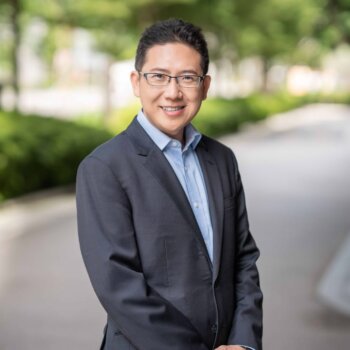A post on Salesforce’s website heralds the end of the nine-to-five era, explaining that it makes no sense to expect people to continue working in this archaic way, and proposes three new approaches: flex, fully remote and office-based, which will define how the company works when things normalize after the pandemic.
The company says it expects the flex format to be adopted by the vast majority of its employees worldwide, which will probably involve two-to-three days in the office dedicated to collaborative group tasks, presentations or meetings with clients, in a flexible regime depending on the needs of the moment. The fully-remote mode will be adopted by people who do not live near a company office or who are occupied with tasks that do not require an office, and who will be able to work remotely all the time. The office-based model, on the other hand, is reserved only for the small minority of employees with responsibilities that require their presence there.
Going to the office will no longer be about measuring the time we arrive, the time we leave, or how many hours we spend in the office. The task in hand is not just about making the workplace a more flexible environment, but also of making our schedules more flexible. The old-fashioned time clock becomes completely meaningless.
Salesforce, which has offices around the world including the iconic Salesforce Tower, the tallest building in San Francisco, says that its offices have been one of the foundations of its corporate culture, and that after the pandemic they will be redesigned so that the majority of employees who will pass through them on a regular basis will still find the connection, camaraderie and innovation that result from meeting people.
There will be no more row upon row of desks where each employee sat down to work for set, pre-determined hours, and instead more open areas, more collaboration and breakout spaces designed for informal collaboration, to replicate the kind of people-to-people connection and serendipity that is still difficult to achieve remotely.
Salesforce now joins many other companies that, learning from the pandemic, are considering rewriting their rules of engagement. Siemens, for example, has been praised for redefining remote working as a central component of the new normal, and its approach to these changes reinforces trust in the relationship with employees, a trust that allows the company to invest in their training so that they can shape their work themselves, improve their company’s performance, and help define it as a flexible and attractive employer, better able to attract and retain talent.
The appearance of offices will change dramatically in the wake of the pandemic, and technology will contribute significantly to this: Cisco CEO Chuck Robbins says that 3D-based technologies will be used extensively in hybrid environments in the future, to make meeting participants via tools such as Webex feel as if they are virtually in the room, to avoid the feeling of being an outsider that often happens when a person participates remotely in a meeting where everyone else is in the same room.
What kind of preferences will talented workers with options express as this new normality of work is defined? Will they want to return to offices as they were before the pandemic and sit for eight endless hours in the same place while a supervisor watches over them, or will they tend to prefer companies that create environments based on trust, which provide them with more freedom to define the way they work?
If you think the answer is unclear, I’m afraid you have a serious problem. Read in detail how companies like Salesforce or Siemens are rethinking their relationships with the workforce, and compare it to your plans — or lack thereof. If you let time go by and keep trying to do the same thing without making any changes, despite the enormous change in the context around us, have no doubts: your problem will only grow.





























